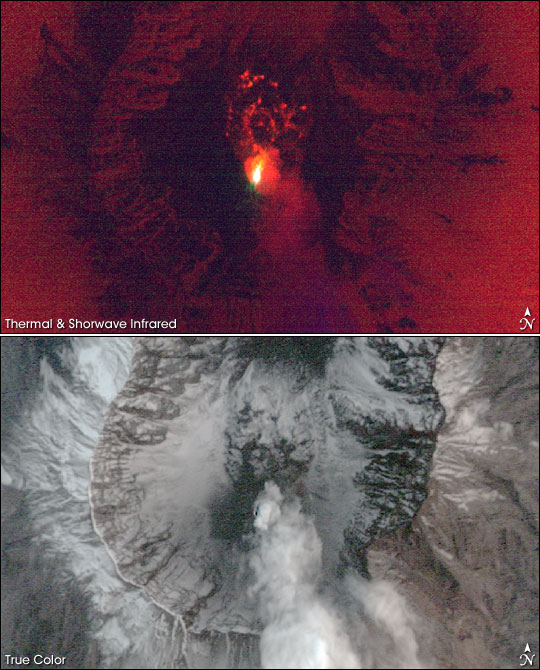


Hot lava had broken through the surface of the growing lava dome on Mount St. Helens when the MASTER sensor took this image in the early morning hours of October 13, 2004. MASTER, which stands for MODIS/ASTER Airborne Simulator, is an aircraft-mounted remote-sensing device built to simulate the Moderate Resolution Imaging Spectroradiometer (MODIS) and Advanced Spaceborne Thermal Emission and Reflection Radiometer (ASTER) instruments on NASA’s Terra satellite. The top image was made from MASTER’s thermal-sensitive bands, and shows the heat in the volcano’s crater. A brilliant white spot on the southwest side of the crater is hot lava bubbling to the surface. Smaller, less intense hot spots around the crater have formed where magma near the surface has heated the rock above it. The dark area around the lava dome is the crater. Shielded from the sun and covered with snow, the dark crater floor is cooler than the surrounding landscape, which appears red. A plume of steam rising from the lava dome (colored purple) drifts southeast in this image. The plume and crater floor are more visible in the lower, true-color image. Acquired just after dawn, the image has few shadows and low contrast.
An image composed of thermal infrared and visible light wavelengths reveals more details around the mountain. The volcanic plume is bright cyan, the cool crater is purple, and snow is light blue. To the north of the volcano, two bright red lines extend from south to north. These are warm-water streams, possibly heated by the active volcano.
Images courtesy Jeffrey Myers, NASA Ames Research Center